Myanmar
All Destinations
Myanmar
Myanmar is slowly beginning to open up to luxury tourism, and a handful of stylish boats and properties now allow travellers to access remote corners of this enigmatic country without the need to sacrifice on comfort. Travelling here is a true adventure back in time.
Now more than ever, the Myanmar is in need of cultured and thoughtful travellers to help promote to the outside world, what makes it so special. Set at the crossroads between East and South Asia, sharing borders with India and Bangladesh, Myanmar possesses an intoxicating blend of cultural influences, combined with a traditional way of life which prevails after years of isolation following British colonial rule.
Those who venture into these beautiful lands are richly rewarded by a warm welcome, ancient temples, colourful markets and stunning landscapes from the emerald islands of the Andaman Sea, to the mountain ranges of the Eastern Himalaya.
Best explored by boat up the Irrawaddy river, or on a tailor-made tour in the company of a private guide, there is no end of unique experiences to get under the skin of this fascinating country. From hiking, climbing, fishing, horse riding and diving, sailing in the magnificent Mergui Archipelago and perhaps the most pictured of them all, an early morning balloon flight over Bagan.
From the astonishing pagodas in Yangon, the village life around Inle Lake, untouched beaches and the utter charm of its indigenous people (comprised of no less than 135 different ethnic groups) the diversity and innocence of this nation is practically impossible to convey to anyone who has not visited; and thus essential to discover.
Quick Facts
Capital
Nay Pyi Taw
Population
53 million
Area
676,552 sq km (261,218 sq miles)
Major Languages
Burmese, minority languages
Major religion
Buddhism
Monetary Unit
Kyat
Flight time from London
14.5 hours via Dubai
Time Difference
GMT + 6.5
When to go
For warm dry days, Myanmar is best visited between November and March. The green season (the months either side) is also a good bet for those looking to explore the sites with less competition for accommodation and access to the main sites.
While the country can be visited at any time of year, the peak wet season can lead to some regions becoming in accessible. Officially the wet season runs from May to October, with the start of the wet season bringing the highest temperatures which can reach in excess of 40°C in the west, lower central and south. The cooler months run from October to January, especially noticeable in the foothills and highlands.
- J
- F
- M
- A
- M
- J
- J
- A
- S
- O
- N
- D
- High Season
- Mid Season
- Shoulder Season
Highlights
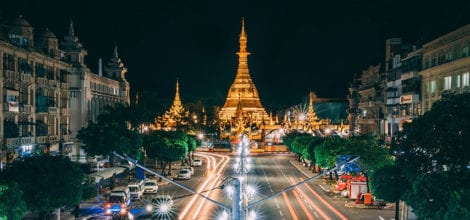
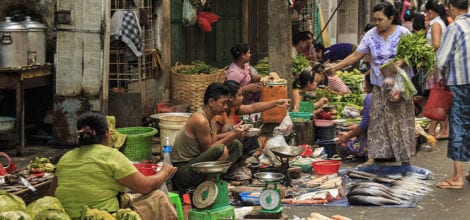

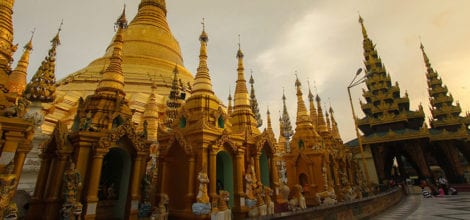
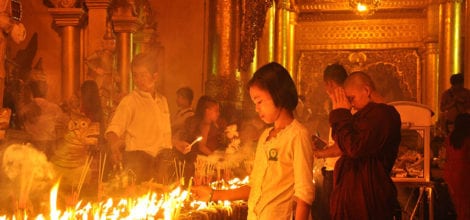

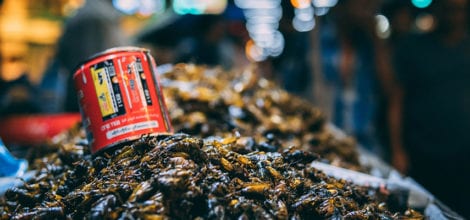
Yangon
The former capital of Myanmar, and its largest city, Yangon, is often the first point of entry for most international visitors. Best known for the spectacular Shwedagon Pagoda, which is a truly awesome sight, particularly as the sun sets on the golden domes with almost blinding effect.
The city is surprisingly green thanks to its stunning lakes, shady parks and verdant tropical trees. Institutions such as the National Museum and Bogyoke Museum displaying the country’s historical events are worth visiting but it’s best to discover Yangon by exploring the streets mixing with the local people.
Throughout the metropolis, numerous food stalls, historical sites, art galleries, souvenirs and markets are yours to explore. Many places still retain some of the charm of a bygone era and there are many ways to become acquainted with the city.

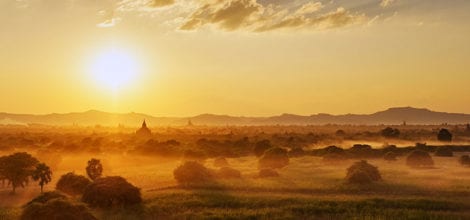
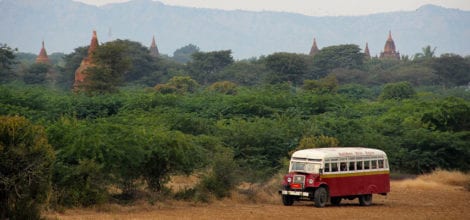
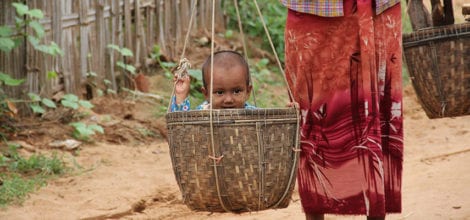
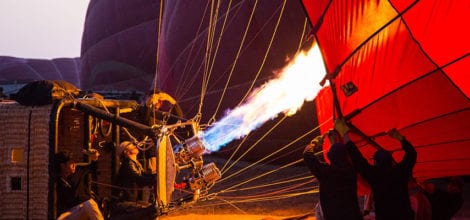

Bagan
Bagan, in the Mandalay Region, is a key destination for visitors to Myanmar and boasts over 2,000 ancient pagodas and temples. You can visit Bagan all year round as there is no actual rainy season like in the lower parts of Myanmar. With more than 1,500 years of history, beautiful local art, such as lacquer ware, basket and cloth weaving, it is the most fascinating place for travellers.
Numerous traditions have been preserved in Bagan and its surrounding villages, including handicrafts such as beautiful lacquerware, basket weaving, sand art painting, woodcarving and bronze wares. If you cannot make it to a workshop to witness these items being made, be sure to browse some of the stalls around the pagodas for suitable souvenirs and keepsakes. There are also some truly delicious locally produced foodstuffs such as jaggery, toddy, tamarind flakes, plum jams and bean paste.
Enjoying the atmosphere of a pagoda festival in Bagan can be the best time to witness Buddhist rituals and experience the social gatherings of local people. The month long, sanctified festival for Ananda Temple usually falls in January, whereas the one for Manuha Pagoda is held in September or October. Another famous event in Bagan, Alo-Daw Pyae Pagoda Festival, occurs in December. In April the whole country enjoys the water festival, Thingyan, and in the dry zone Bagan is no exception.
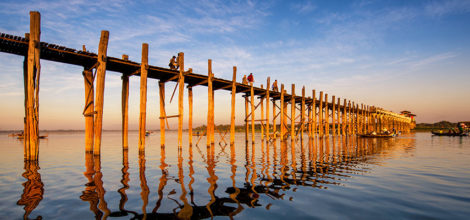


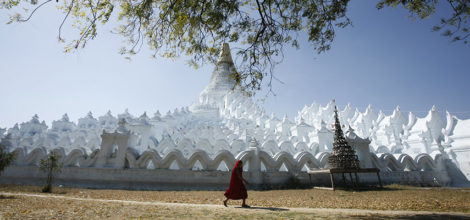
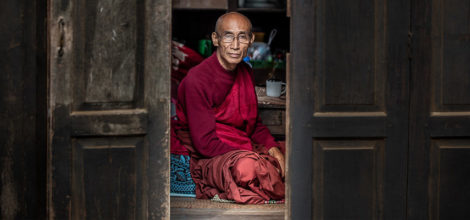
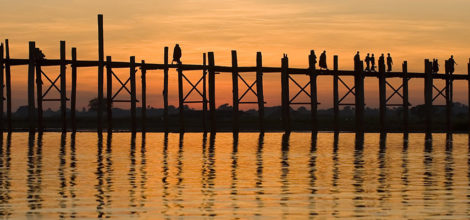
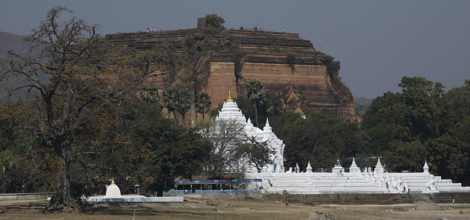

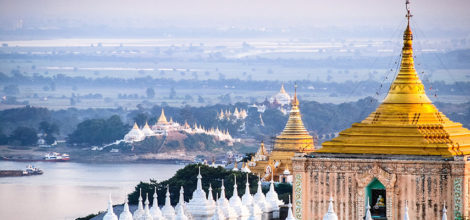
Mandalay
Mandalay, built by King Mindon, still evokes images of a romantic, bygone era with its royal palace and impressive moat sitting at the foot of a high, pagoda-topped hill. It is also a busting, economic center for business. Located on the banks of the Ayerwaddy River, Mandalay lies within easy striking distance of former colonial hill stations, ancient cities and other cultural attractions.
One of the city’s notable attractions include Kuthodaw Pagoda, where Buddhist scriptures are carved on 729 marble tablets, billed as the “biggest book” in the world. One particularly beautiful legacy of King Mindon is the all-teak pavilion he lived in just before his death, The Golden Palace (Shwe Kyaung). The king’s reign is considered by many to be a golden age of Myanmar culture.
South of Mandalay is Amarapura, which was the royal capital in the 18th century. Today, it is home to the beautiful U Bein Bridge, a long picturesque construction that crosses the Taung Thaman Lake and for the site of Maha Gandayon Monastery, where 1000 monks learn scriptures. Amarapura is also famous for quality textiles.
To the West of Mandalay is Sagaing, an important location for Buddhist study. Many meditation retreats are available in this town.
To the East of Mandalay is Pyin Oo Lwin. It was originally a hill station for the British to escape the heat of lower Burma. The colonial influence is still visible today, in the buildings and wide avenues. The Botanical Gardens are the main attraction of this town.
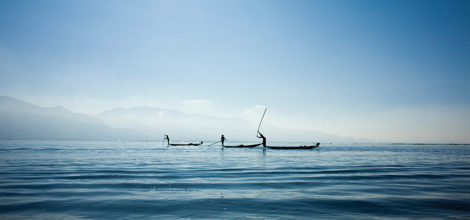
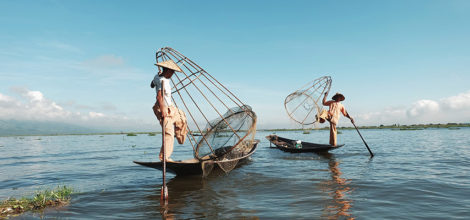
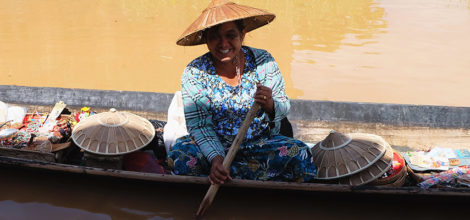
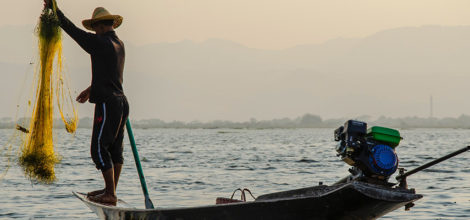
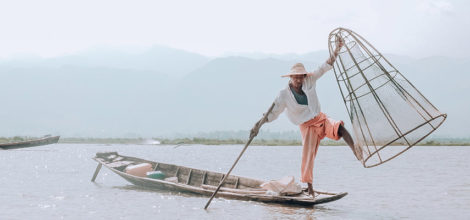
Lake Inle
The Inle Lake region is one of Myanmar‘s most anticipated destinations, and all the hype is justified. Picture a vast, serene lake – 13.5 miles long and 7 miles wide – fringed by marshes and floating gardens, where stilt-house villages and Buddhist temples rise above the water, and Intha fisher folk propel their boats along via their unique technique of leg-rowing. Surrounding the lake are hills that are home to myriad minorities: Shan, Pa-O, Taung Yo, Danu, Kayah and Danaw, who descend from their villages for markets that hopscotch around the towns of the region on a five-day cycle.
Nyaungshwe is the area’s accommodation and transport hub. It’s a scrappy place, but once you’ve experienced the watery world that sits right by it and explored the environs of Inle Lake, that won’t matter. Few people leave here disappointed with what they’ve seen and done.

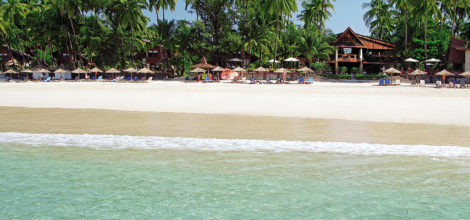
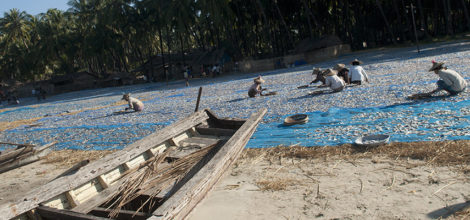
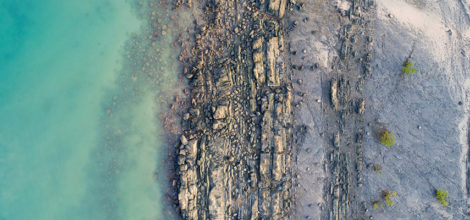
Ngapali Beach
With its pristine, palm-tree-fringed white sand, the clear waters of the Bay of Bengal, and a host of sophisticated accommodation, Ngapali – supposedly named years ago by a homesick Italian reminiscing about Napoli – has a justified reputation as Myanmar‘s premier beach getaway.
But for all the swish resorts, Ngapali maintains a laid-back fishing village vibe, as evidenced by the small boats that head out nightly to catch the bounty that is served up to visitors just hours later. The locals remain smiley, and despite the increasing number of hotels, the 15 miles of coast here means there’s still a lot of space on the beach.
Peak season is from November to March. Even then, Ngapali is an early-to-bed place rather than a rip-roaring beach-party destination. During the rainy season (May to October), things are almost comatose, with many hotels closing for renovations or just opening a few rooms.
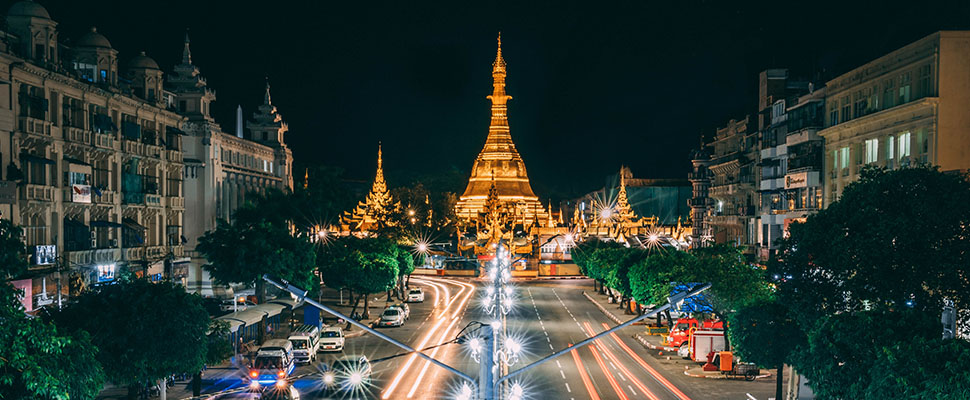
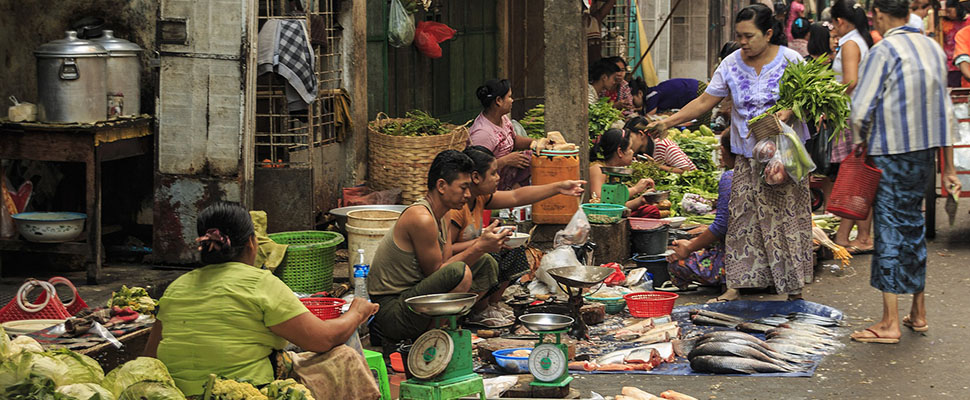
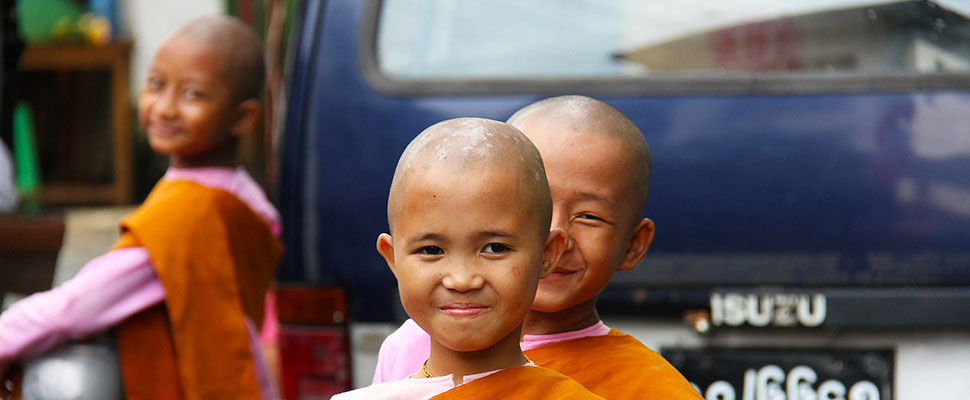
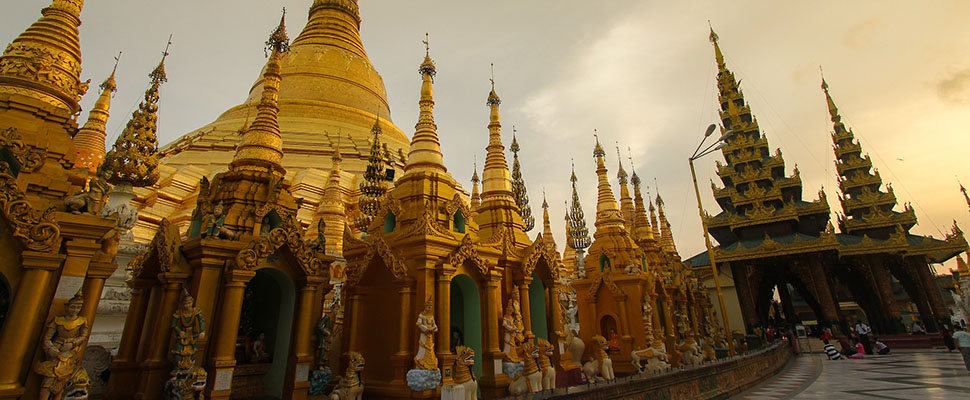
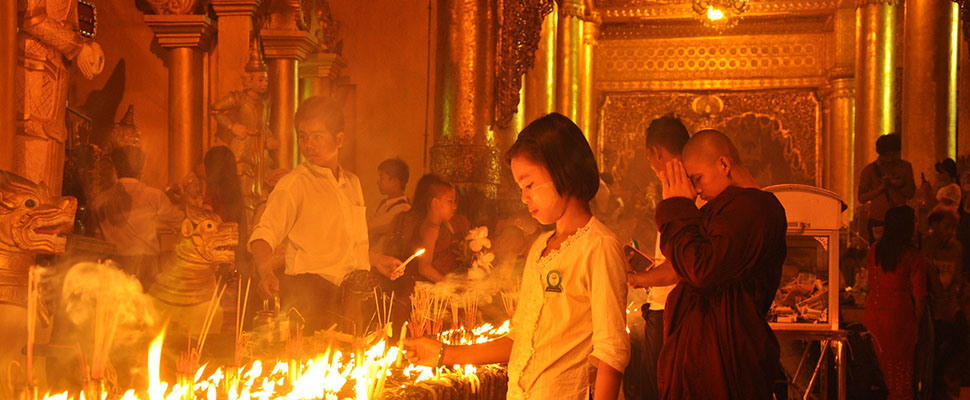
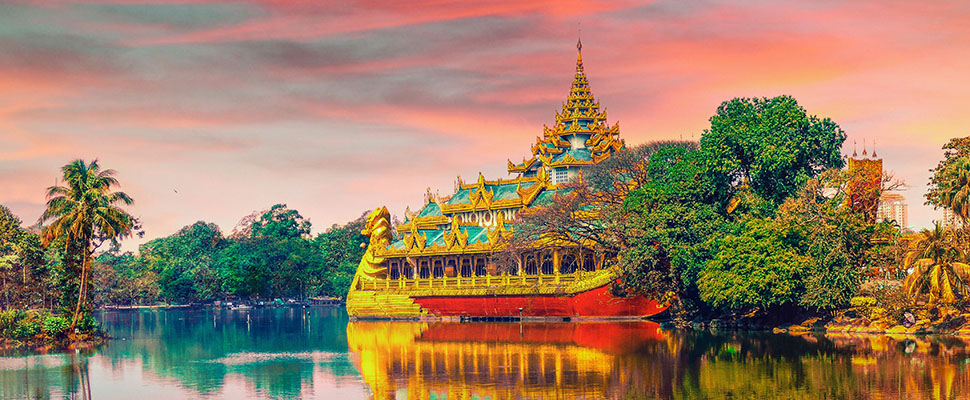
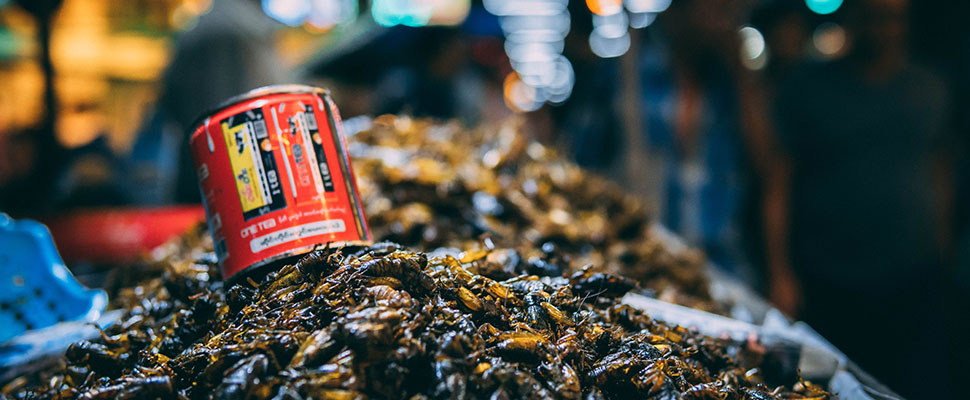
Yangon
The former capital of Myanmar, and its largest city, Yangon, is often the first point of entry for most international visitors. Best known for the spectacular Shwedagon Pagoda, which is a truly awesome sight, particularly as the sun sets on the golden domes with almost blinding effect.
The city is surprisingly green thanks to its stunning lakes, shady parks and verdant tropical trees. Institutions such as the National Museum and Bogyoke Museum displaying the country’s historical events are worth visiting but it’s best to discover Yangon by exploring the streets mixing with the local people.
Throughout the metropolis, numerous food stalls, historical sites, art galleries, souvenirs and markets are yours to explore. Many places still retain some of the charm of a bygone era and there are many ways to become acquainted with the city.


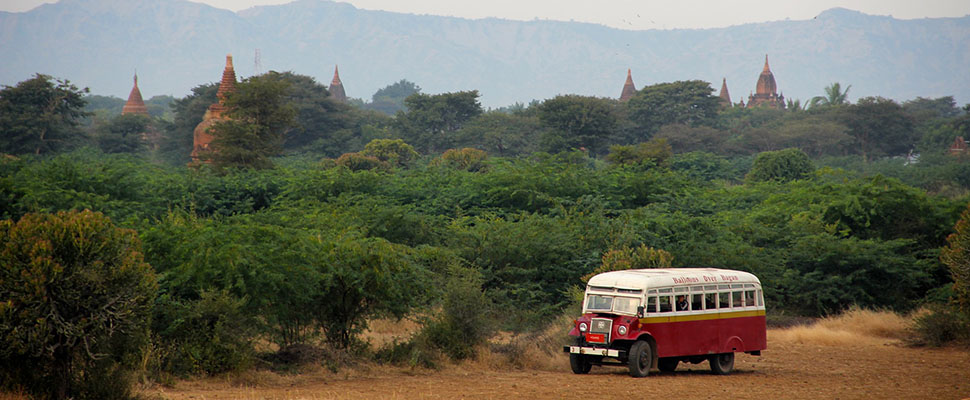

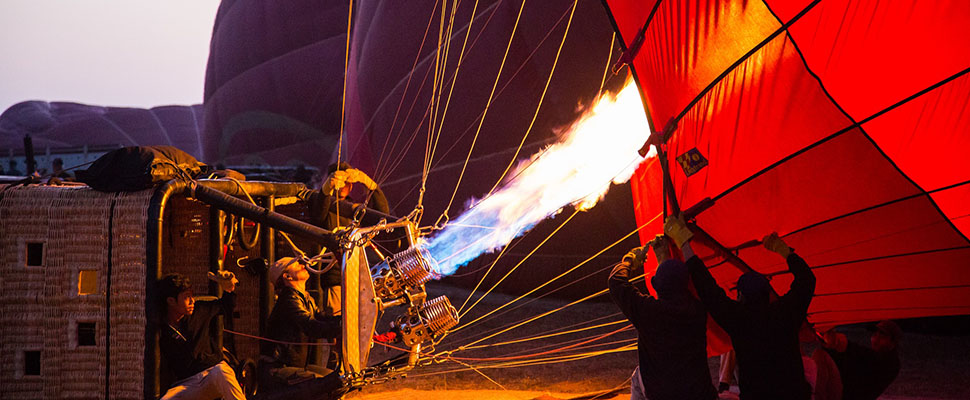
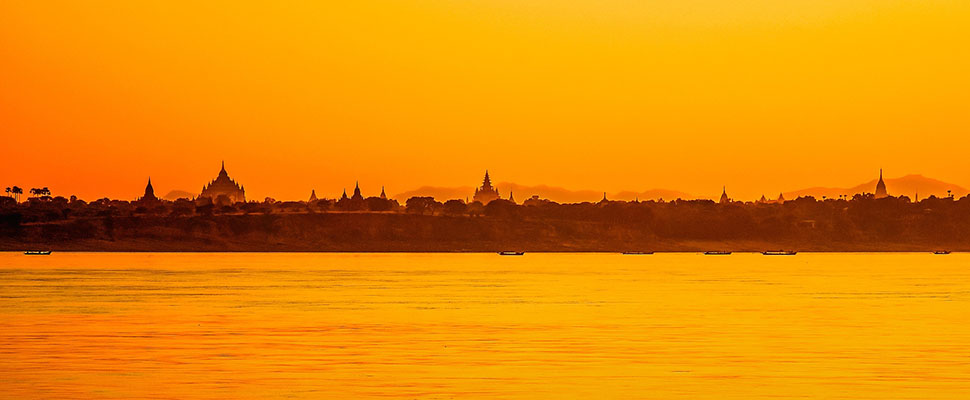
Bagan
Bagan, in the Mandalay Region, is a key destination for visitors to Myanmar and boasts over 2,000 ancient pagodas and temples. You can visit Bagan all year round as there is no actual rainy season like in the lower parts of Myanmar. With more than 1,500 years of history, beautiful local art, such as lacquer ware, basket and cloth weaving, it is the most fascinating place for travellers.
Numerous traditions have been preserved in Bagan and its surrounding villages, including handicrafts such as beautiful lacquerware, basket weaving, sand art painting, woodcarving and bronze wares. If you cannot make it to a workshop to witness these items being made, be sure to browse some of the stalls around the pagodas for suitable souvenirs and keepsakes. There are also some truly delicious locally produced foodstuffs such as jaggery, toddy, tamarind flakes, plum jams and bean paste.
Enjoying the atmosphere of a pagoda festival in Bagan can be the best time to witness Buddhist rituals and experience the social gatherings of local people. The month long, sanctified festival for Ananda Temple usually falls in January, whereas the one for Manuha Pagoda is held in September or October. Another famous event in Bagan, Alo-Daw Pyae Pagoda Festival, occurs in December. In April the whole country enjoys the water festival, Thingyan, and in the dry zone Bagan is no exception.
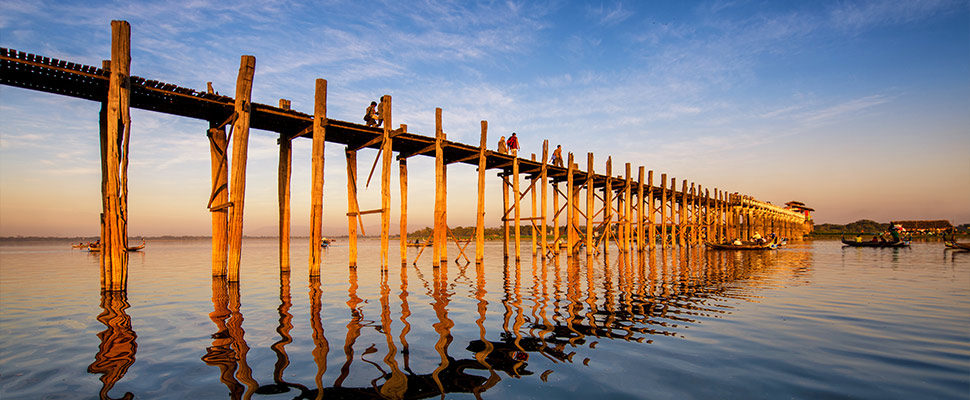
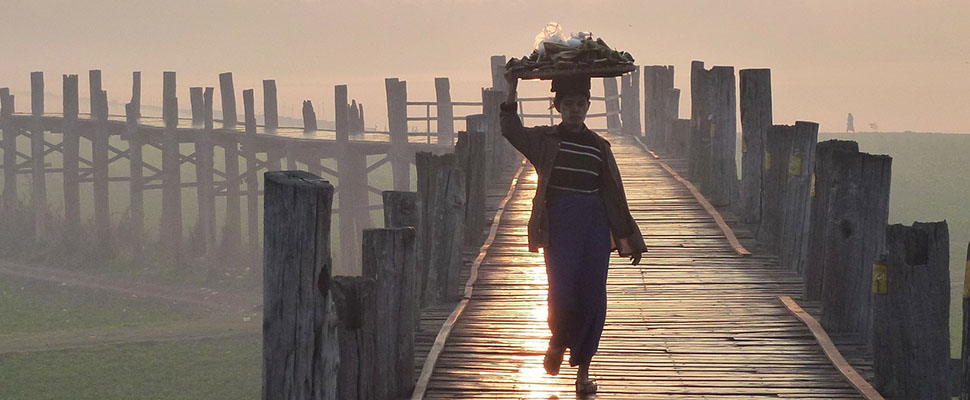
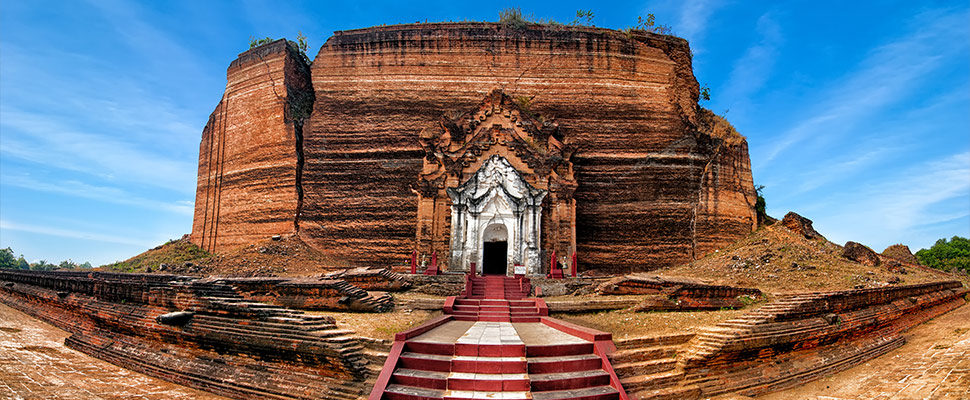
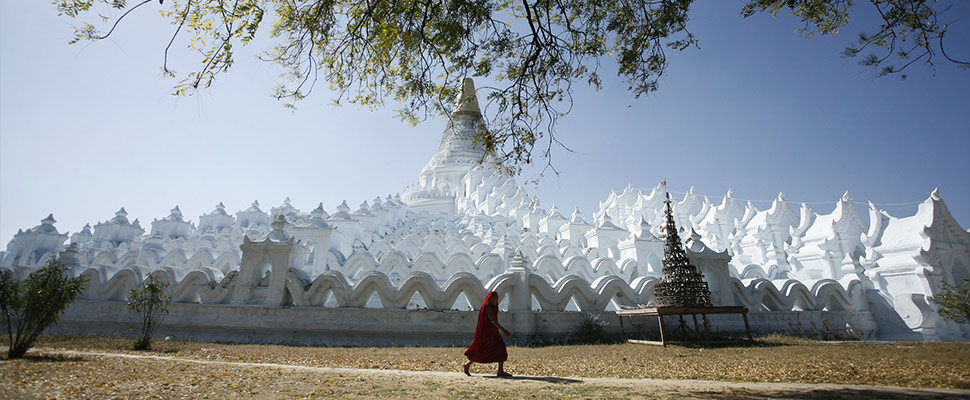
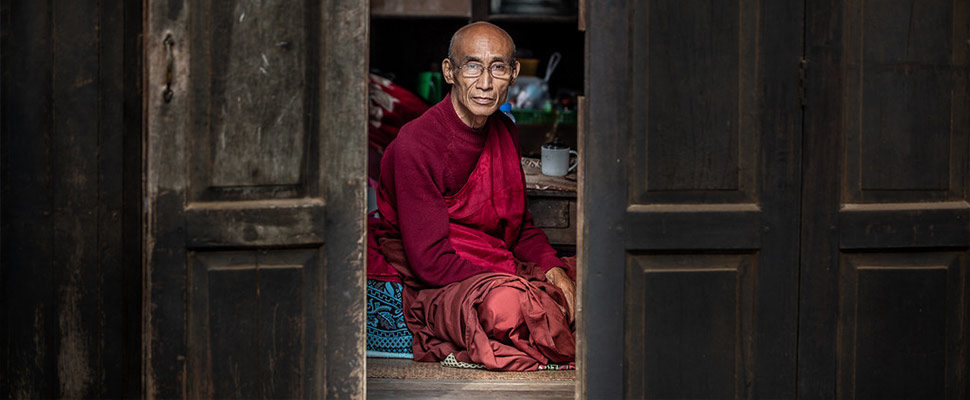
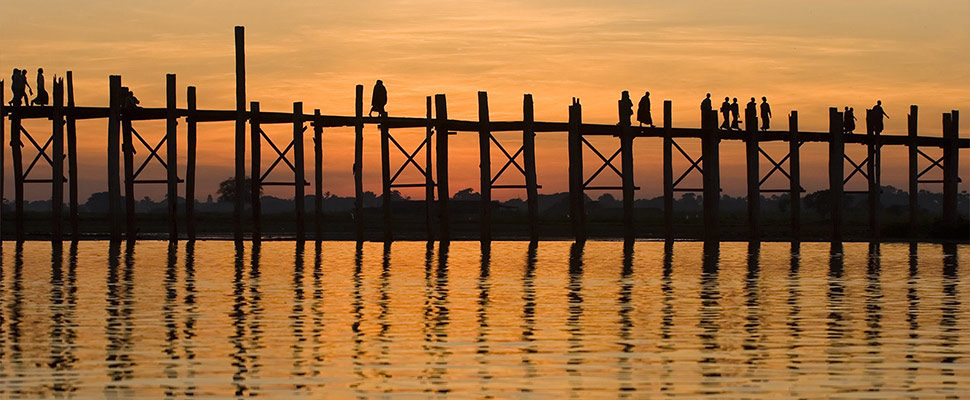
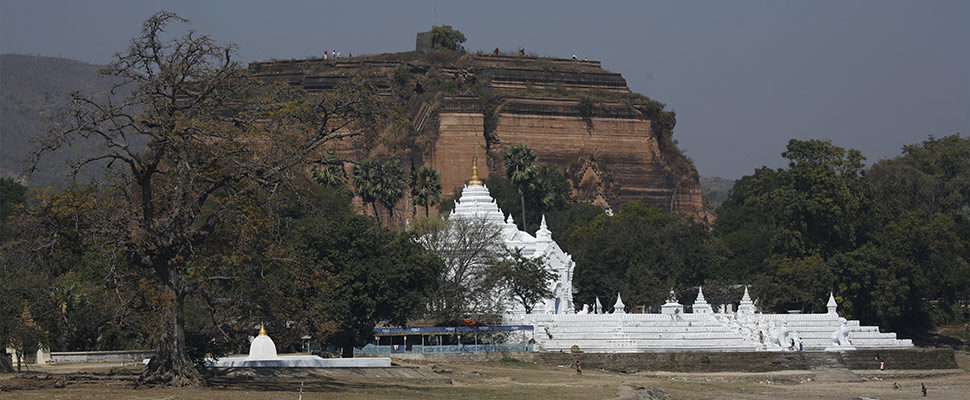
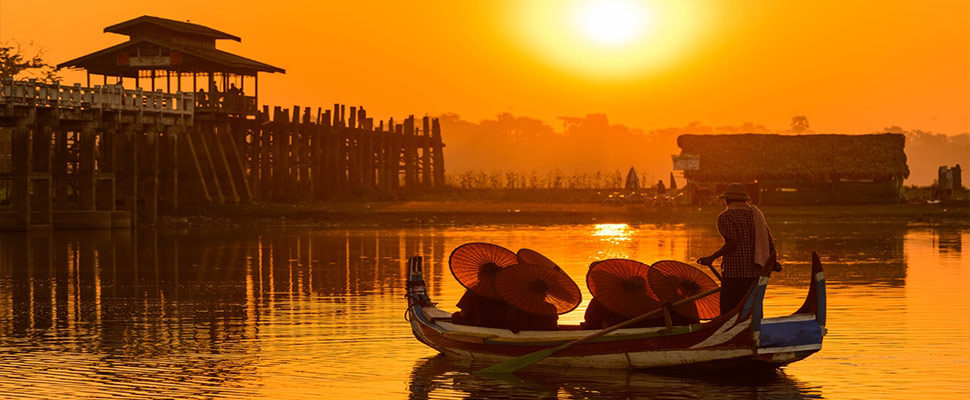

Mandalay
Mandalay, built by King Mindon, still evokes images of a romantic, bygone era with its royal palace and impressive moat sitting at the foot of a high, pagoda-topped hill. It is also a busting, economic center for business. Located on the banks of the Ayerwaddy River, Mandalay lies within easy striking distance of former colonial hill stations, ancient cities and other cultural attractions.
One of the city’s notable attractions include Kuthodaw Pagoda, where Buddhist scriptures are carved on 729 marble tablets, billed as the “biggest book” in the world. One particularly beautiful legacy of King Mindon is the all-teak pavilion he lived in just before his death, The Golden Palace (Shwe Kyaung). The king’s reign is considered by many to be a golden age of Myanmar culture.
South of Mandalay is Amarapura, which was the royal capital in the 18th century. Today, it is home to the beautiful U Bein Bridge, a long picturesque construction that crosses the Taung Thaman Lake and for the site of Maha Gandayon Monastery, where 1000 monks learn scriptures. Amarapura is also famous for quality textiles.
To the West of Mandalay is Sagaing, an important location for Buddhist study. Many meditation retreats are available in this town.
To the East of Mandalay is Pyin Oo Lwin. It was originally a hill station for the British to escape the heat of lower Burma. The colonial influence is still visible today, in the buildings and wide avenues. The Botanical Gardens are the main attraction of this town.


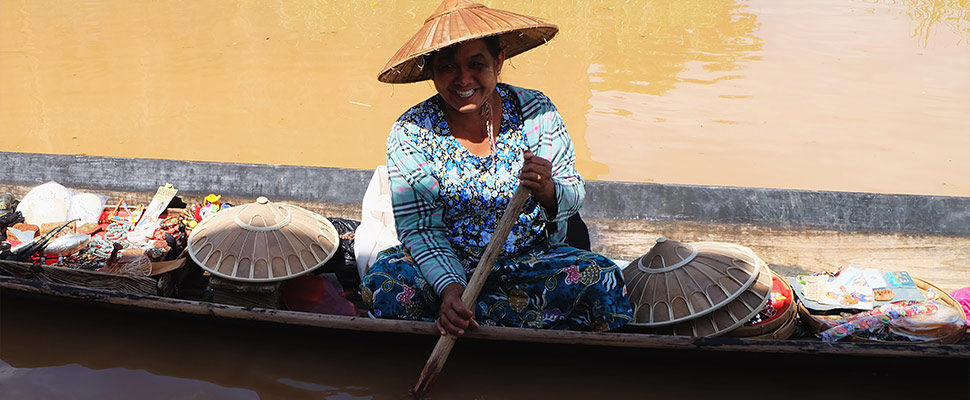
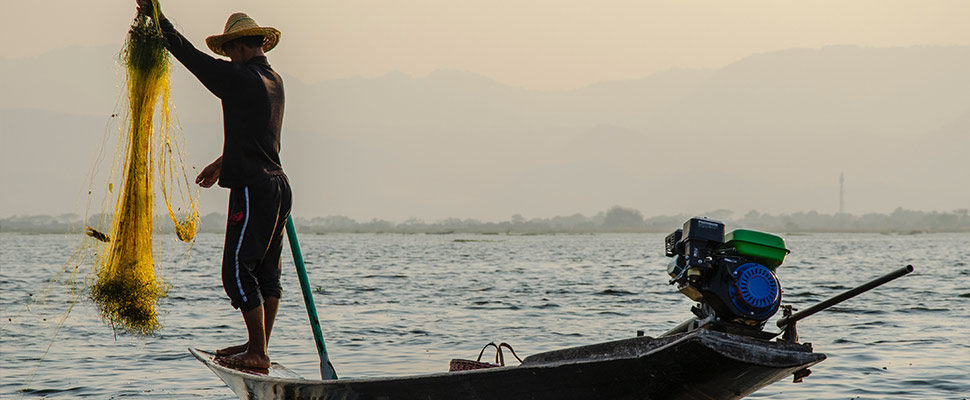
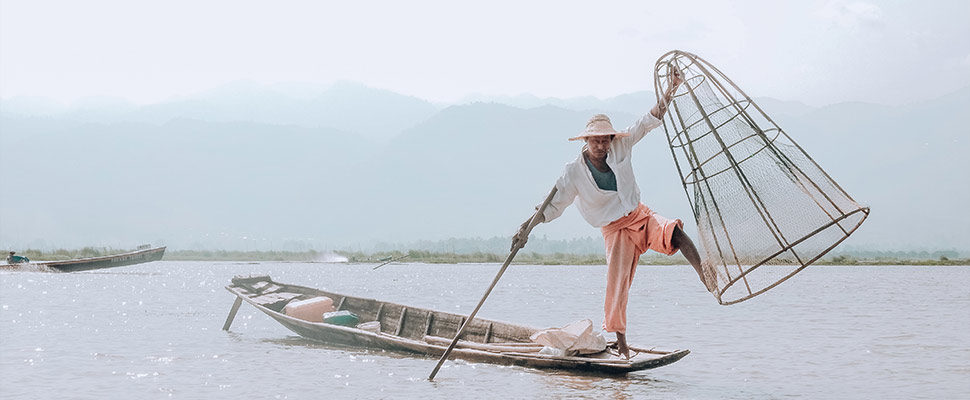
Lake Inle
The Inle Lake region is one of Myanmar‘s most anticipated destinations, and all the hype is justified. Picture a vast, serene lake – 13.5 miles long and 7 miles wide – fringed by marshes and floating gardens, where stilt-house villages and Buddhist temples rise above the water, and Intha fisher folk propel their boats along via their unique technique of leg-rowing. Surrounding the lake are hills that are home to myriad minorities: Shan, Pa-O, Taung Yo, Danu, Kayah and Danaw, who descend from their villages for markets that hopscotch around the towns of the region on a five-day cycle.
Nyaungshwe is the area’s accommodation and transport hub. It’s a scrappy place, but once you’ve experienced the watery world that sits right by it and explored the environs of Inle Lake, that won’t matter. Few people leave here disappointed with what they’ve seen and done.



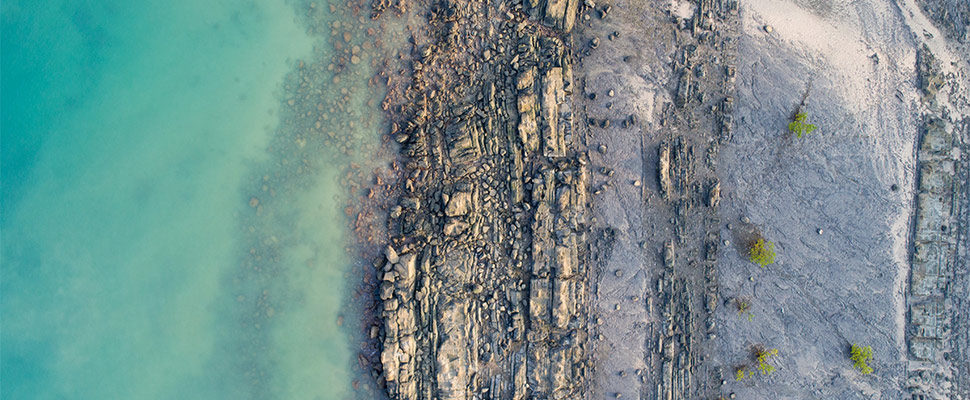
Ngapali Beach
With its pristine, palm-tree-fringed white sand, the clear waters of the Bay of Bengal, and a host of sophisticated accommodation, Ngapali – supposedly named years ago by a homesick Italian reminiscing about Napoli – has a justified reputation as Myanmar‘s premier beach getaway.
But for all the swish resorts, Ngapali maintains a laid-back fishing village vibe, as evidenced by the small boats that head out nightly to catch the bounty that is served up to visitors just hours later. The locals remain smiley, and despite the increasing number of hotels, the 15 miles of coast here means there’s still a lot of space on the beach.
Peak season is from November to March. Even then, Ngapali is an early-to-bed place rather than a rip-roaring beach-party destination. During the rainy season (May to October), things are almost comatose, with many hotels closing for renovations or just opening a few rooms.
Where to stay
These are just a selection of the properties we can personally recommend. Please get in touch to hear more about our full portfolio.
Bagan Lodge
Situated just south of ancient Bagan, Bagan Lodge strikes a tempting balance between modern comfort and historic Burmese elegance, within a short distance for the many temples, pagodas and stupas for which Bagan is famed.
Belmond Governor’s Residence
A romantic, colonial-style mansion dating from the 1920’s, the Belmond Governor’s Residence is redolent of the days when it was home to the ruler of Myanmar’s southern states.
Hotel by the Red Canal
Located by Mandalay’s famous Red Canal, this four star hotel is one of the only boutique properties in town. With lush tropical gardens and tranquil water features, it is a breath of fresh air in Myanmar’s former royal capital.
The Hotel @ Tharabar Gate
The Hotel @ Tharabar Gate is located in the unique Archaeological Site of South East Asia, the ancient capital of the Burmese empire, in old Bagan.
Inle Princess
The Inle Princess Resort sits nestled beneath Blue Mountain, offering a serene refuge to unwind in and modern comforts alongside Burmese culture and tradition.
Ngapali Bay Villas and Spa
Ngapali Bay Villas and Spa is a stylish beachfront hotel set on a secluded bay at the Northern end of Ngapali Beach. Designed by acclaimed British architect David Wordsworth, 32 thatched stand-alone villas are uniquely designed and decorated with an essence of understated luxury.
Sandoway Resort
Nestled amongst coconut palms on a pristine beach front, the Sandoway Resort boasts 59 villas and cottages scattered throughout 6 acres of 450 meters long beach frontage and tropical gardens.
The Strand Hotel
The Strand Hotel in Yangon is one of the most iconic 5 star hotels in Asia. Built in 1901 and acquired soon after by the Sarkies brothers, famed for the likes of Raffles in Singapore and The E&O in Penang, it remains one of Asia’s most enduring Colonial landmarks.
Villa Inle Boutique Resort
Villa Inle Boutique Resort is nestled beneath the mountains of the Shan State in 20 acres of exotic gardens on the eastern banks of Inle Lake. This idyllic retreat offers 27 spacious free standing villas, designed to blend harmoniously with the natural surroundings.
GET IN TOUCH WITH US NOW TO START PLANNING YOUR JOURNEY
Follow Us
Proudly ASSOCIATED WITH












